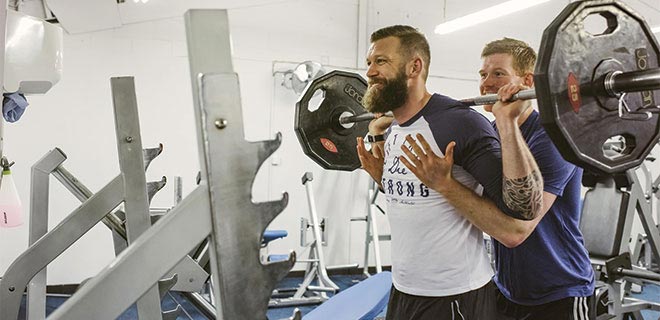City Dweller Magazine have teamed up with James and Joe from Sustain Nutrition. This month we’re discovering how to train in a way that we can measure
Are you training or exercising? Believe it or not there is a huge difference.
Many people will think it’s the same thing but there are actually a few subtle differences.
If you are going to the gym or working out without a structured plan or recording anything then I’m afraid you are just exercising, if you are following a structured plan for a specific outcome and tracking your progress then and only then are you are training!
If you go into a session with no idea what you are doing or even if you have a plan that has no real crossover to what you did last time then it’s not really possible to track if you are progressing.
Using HIIT for example, now doing a hard HIIT session is fantastic but if you do different exercises each time or different time splits how can you track if you are improving? Doing HIIT on a treadmill or a rower gives you specific info that you can track, be that distance or speed.
I know that if the last time I was doing 30sec sprints on the rower I was hitting 100m and now I’m hitting 110m then there is an improvement. Same with the treadmill, if I was doing 30sec hill sprints at 15kph and now I am doing 40sec at 15kph then that is a measurable improvement.
Now I don’t want you to think that I am bad mouthing any kind of body weight HIIT session because I am certainly not! I’m talking about optimal training here as I’m sure that is what most people want – optimal results.
You can’t get much better examples of structured training than with athletes, you can’t imagine Jessica Ennis wandering into the gym and thinking ‘right what should I do today then?’
She will have her training plan set out and tracked to every rep, set, weight and time completed and recorded and logged to track progress.
‘What gets measured gets managed!’
If you don’t track your weights lifted and the reps achieved or repeat the same training plan then how can you know if you are progressing?
For example if you can squat 60kg for 10 reps but the next week you do 70kg for 8 reps then 80kg for 6 reps and finally 90kg for 4 reps have you actually got stronger or is your strength the same?
As a massive contradiction then training should be varied but needs to have enough repetition to track progress, changing a plan every 4-8 weeks or once strength gains have ceased is always a good option but constantly switching your workout for ‘muscle confusion’ is just silly.
If you can track that you are adding more weight to the bar, doing more reps, moving faster or further then you know you are making progress.
This is one issue with classes like spin, body pump, circuits etc. It’s fine to go in and work really hard for 45mins but there is no real way of tracking your own progress by using these solely.
Attending a class leaves you in the hands of the programming of the instructor, you may be able to select the weights you use but the exercises, rep scheme and even tempo will be dictated to you.
Again, a superior option to doing nothing and certainly can deliver results however with no real control over the class it’s impossible for you to adjust. For example if my fat loss has stalled and I would like to increase my calorie output it’s easier for me to either add more volume to my weight training routine or some extra sets to my HIIT, in a class situation this could be near impossible as I am following someone else’s structure.
So, to sum up get a plan and do it!
Even if it’s a bad plan do it and see if it works BUT give it more than a week to see if it does work!
Log everything and try to progress each session, more weight, more reps, faster, further. Anything else and you are just getting sweaty.
Is it wrong to be strong?
Until next time
Take care & comb your hair
James & Joe
Keep up with the guys on their Facebook Page: fb.com/sustainnutrition/ or on Instagram: Sustain_Nutri




